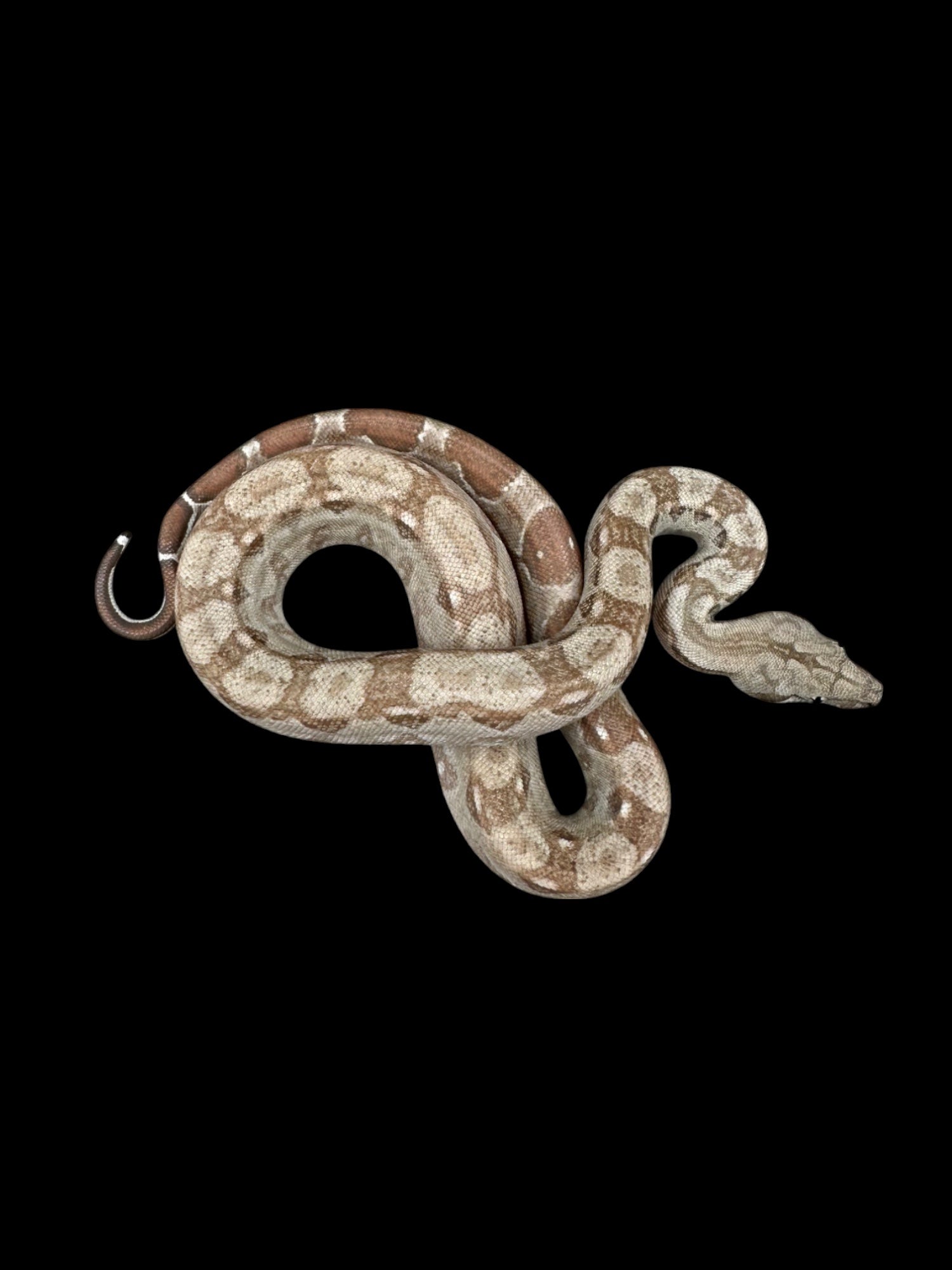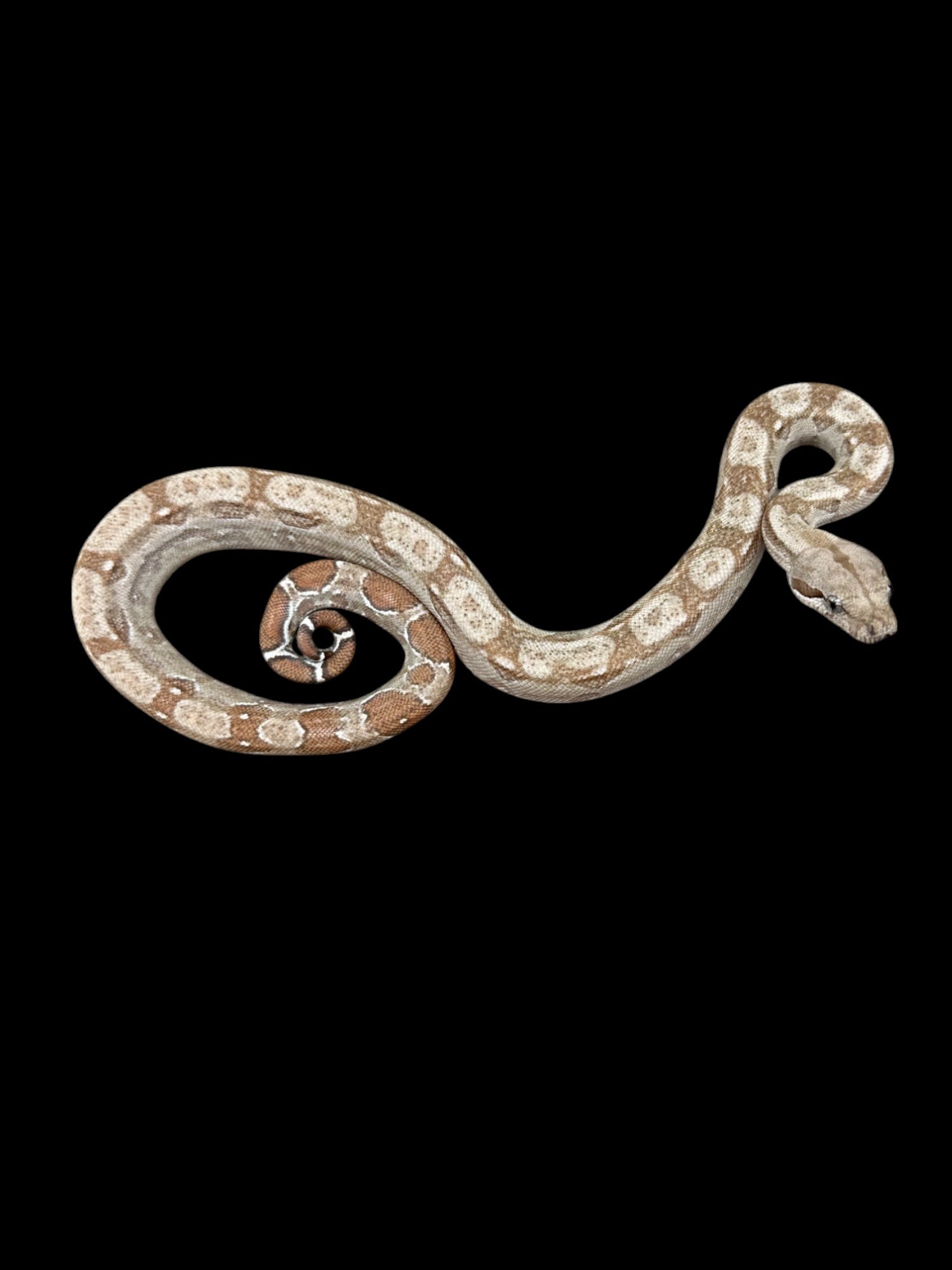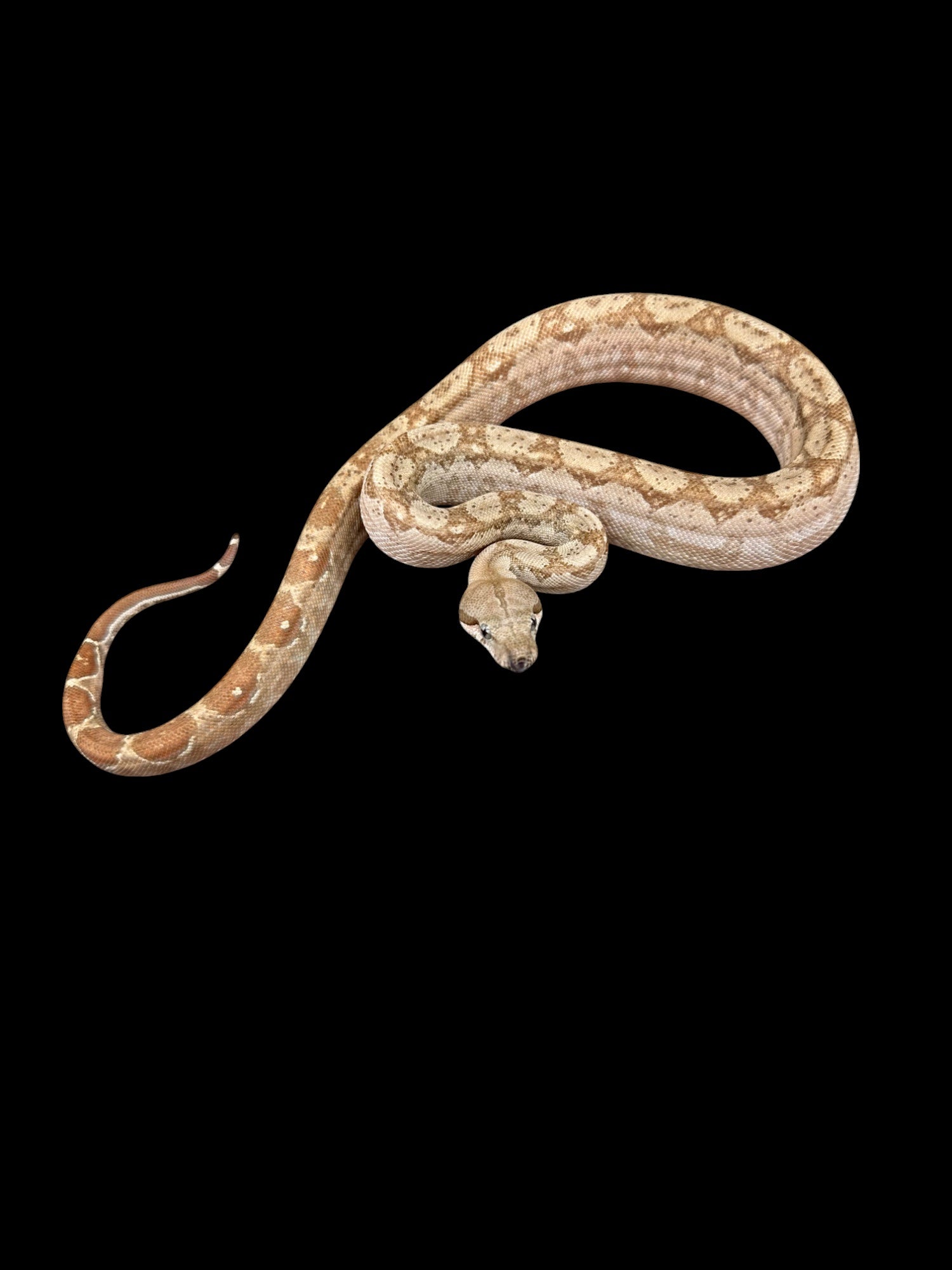Photo Disclaimer
Description
Boa Constrictor Imperator (BCI)
Boa constrictor imperator
Morph/Lineage: Burk’s T+ Albino, 66% Het Type 2 Anery (Nicaraguan Locality)
Species Overview
-
Size: BCI typically reach 6–8 feet (1.8–2.4 m) in length, though Nicaraguan locality boas are generally smaller, averaging 4–6 feet (1.2–1.8 m). Adults weigh less than larger Central or South American lineages, often staying more compact.
-
Appearance: This morph expresses the Burk’s T+ Albino trait, a recessive form of albinism that reduces but does not fully eliminate melanin. This produces warm golden, caramel, and brown tones rather than the bright yellows and whites of standard Albino boas. This particular boa is also listed as 66% Het Type 2 Anery, meaning it has a two-thirds statistical chance of carrying the recessive Type 2 Anery gene but does not visually display it. The Nicaraguan lineage typically adds a darker base colour, compact body, and bold patterning.
-
Distribution: The natural Boa constrictor imperator is native to Central and South America, with the Nicaraguan population being one of the recognized localities.
-
Habitat: In the wild, they inhabit tropical forests, river edges, and scrublands, often in regions with pronounced wet and dry seasons.
-
Behaviour: Primarily nocturnal ambush predators, boas feed on small mammals, birds, and reptiles. Nicaraguan boas are adaptable but remain mostly terrestrial as adults.
Captive Care
-
Enclosure: A naturalistic enclosure is recommended. For Nicaraguan boas, a 4′ × 2′ × 2′ enclosure is generally suitable for adults. Provide branches, hides, cork bark, and plants for cover. Bioactive setups with live plants, leaf litter, and soil-based substrates provide enrichment and help maintain humidity.
-
Temperature & Humidity: Maintain a gradient of 80–85°F (27–29°C) with a basking spot of 88–92°F (31–33°C). Nighttime drops to 75–78°F (24–26°C) are acceptable. Humidity should remain between 55–70%, with access to a water dish large enough for soaking.
-
Diet: Juveniles feed every 7–10 days on appropriately sized rodents, while adults typically feed every 14–21 days. Smaller Nicaraguan boas should not be overfed, as obesity can occur if meals are too large or frequent.
-
Behaviour in Captivity: Generally hardy boas, with Nicaraguan BCIs often showing bold feeding responses. With calm, consistent husbandry, they usually tolerate handling well.
- Special Considerations: While selective breeding has produced a wide variety of morphs, their core care requirements remain identical to standard Boa constrictor imperator.
Genetics/Lineage Note
The Burk’s T+ Albino 66% Het Type 2 Anery (Nicaraguan) morph involves:
-
Burk’s T+ Albino (recessive): A form of “Tyrosinase Positive” albinism that reduces melanin without completely removing it, producing caramel-to-brown tones rather than the stark contrast of standard Albino boas.
-
66% Het Type 2 Anery (possible recessive carrier): Indicates a two-thirds probability that the boa carries the recessive Type 2 Anery gene. This is not visually expressed unless proven through breeding.
-
Nicaraguan Locality: A smaller, darker-bodied population known for compact size (4–6 feet as adults) and bold patterns.



